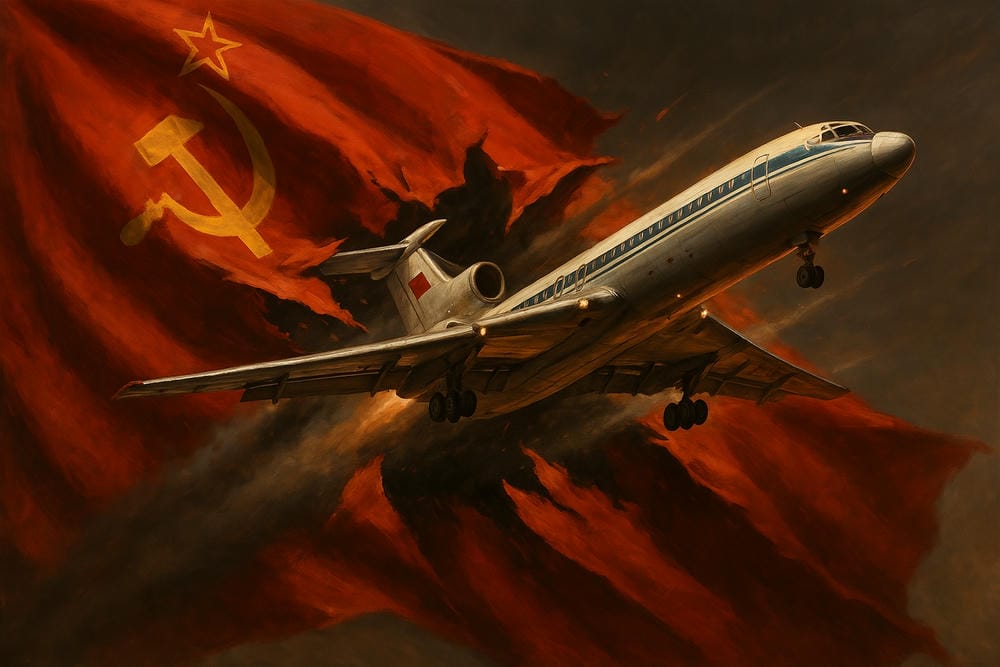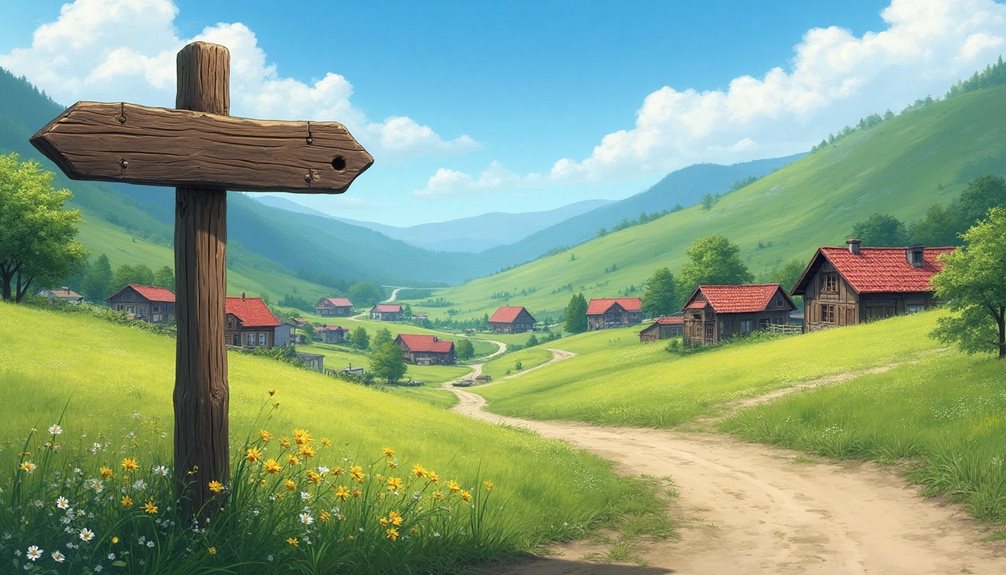Introduction

Aeroflot’s evolution mirrors broader trends in global aviation, transitioning from its Soviet roots to a modern carrier competing internationally. Founded in 1932, it became the USSR’s primary airline, connecting vast regions and showcasing technological advancements. After the Soviet Union’s dissolution in 1991, Aeroflot restructured into a public company, expanding its network to over 150 destinations in 93 countries while maintaining its role as Russia’s flagship airline.
The airline has prioritized fleet modernization and customer experience, integrating advanced technologies for efficiency and comfort. Economically, Aeroflot supports tourism and commerce, contributing significantly to Russia’s GDP. Despite challenges such as environmental concerns and market competition, Aeroflot remains committed to sustainability and innovation, ensuring its continued influence in global aviation while preserving its legacy as a cultural and economic bridge.
Evolution of Aeroflot – The Backbone of Soviet and Russian Aviation
Early Foundations and Dobrolet
Aeroflot’s origins are deeply intertwined with the early years of the Soviet Union. Following the Russian Revolution, Russia was vast and underdeveloped, with poor infrastructure connecting its sprawling territory. The need for fast, reliable transportation led Soviet leaders to invest in aviation as a way to unify the country.
Dobrolet (Добролёт, pronounced: dohb-rah-LYOHT) was founded in 1923 as the USSR’s first civil aviation company. Its name means “Good Flight” or “Good Journey” (from “добро” meaning “good” and “лет” from “летать” – to fly). Dobrolet was more than just an airline; it was a symbol of Soviet modernization and technological ambition. It operated routes that connected even the most remote villages, delivering mail, medicine, and essential supplies. This focus on connectivity reflected the Soviet ideal of linking all peoples and regions in a collective project.
Rebranding to Aeroflot
By 1932, Dobrolet merged with other early Soviet aviation enterprises and became Aeroflot (Аэрофлот, pronounced: ah-eer-ah-FLOHT), which literally means “air fleet.” This rebranding signaled a new era and a much broader mission.
Unique Perspective:
Unlike Western airlines that often grew out of private enterprise and were focused on profit, Aeroflot was state-owned and considered a tool of national integration, economic development, and even soft power projection.
Domestic Connectivity and Economic Impact
Aeroflot’s expansion helped knit together the far-flung republics of the USSR. For example, a worker could travel from Moscow to Yakutsk (over 8,000 kilometers apart) in less than a day—a trip that would take weeks by train or river.
Interesting fact:
By the 1970s, Aeroflot was operating over 3,700 airports—many of them dirt airstrips in Siberia or Central Asia—making it the only way to reach certain towns or villages for much of the year.
Example:
- Moscow to Vladivostok:
- By train: ~7 days
- By Aeroflot flight: ~9 hours
This ability to bridge huge distances not only promoted economic development but also fostered national identity. People from different regions could meet, work, and exchange ideas—something that would have been nearly impossible otherwise.
Innovations and Technological Advancements
Aeroflot was at the forefront of several major aviation innovations:
- First jet airliner service: The Tupolev Tu-104 was one of the world’s first jet-powered passenger planes, entering service in 1956.
- Supersonic travel: The Tupolev Tu-144 (Ту-144, pronounced: too sto sorok chetyre) became the first commercial supersonic transport aircraft to fly, beating the Concorde by two months. Although it had a short service life, it showed the USSR’s willingness to push technological boundaries.
- Transpolar flights: Beginning in the late 1950s, Aeroflot operated flights over the North Pole between Moscow and North America—shortening travel time and showcasing navigational advances.
Global Influence and Cold War Symbolism
During the Cold War, Aeroflot was not just an airline—it was a symbol of Soviet achievement and modernity. Its logo (a hammer and sickle with wings) became globally recognizable.
Advanced Concept:
Aeroflot’s global influence extended beyond transportation. The USSR used Aeroflot routes as a form of diplomacy, opening airline connections with developing countries in Africa, Asia, and Latin America. This helped build alliances and spread Soviet cultural influence.
Example:
- Cultural Exchange:
Aeroflot flights brought foreign students, diplomats, and workers to Moscow for education or training—helping to create a network of pro-Soviet elites worldwide.
Fleet Modernization
Aeroflot maintained an enormous and diverse fleet:
- Ilyushin Il-62 (ИЛ-62): Long-range jet used for international flights.
- Antonov An-2 (АН-2): Rugged biplane used for agriculture, medical services, and even parachute training.
Aeroflot’s focus on modernization meant that even remote routes could be served with safe, reliable aircraft. The airline was also one of the first to develop specialized planes for unique environments (polar regions, deserts).
Unique Insights
- Single Airline System:
Until the late 1980s, Aeroflot had a monopoly on all civil aviation in the USSR—including passenger flights, cargo, medical evacuation, firefighting, crop dusting, and even aerial photography. This “one airline for everything” model was unique globally. - Scale:
At its peak in the late 1970s and early 1980s, Aeroflot was the largest airline in history by passenger kilometers flown—serving over 120 million passengers per year.
Challenges
Despite its successes, Aeroflot faced significant challenges:
- Safety Concerns:
The pressure to serve remote regions sometimes led to operational risks. - Bureaucratic Management:
Centralized planning resulted in inefficiencies common in command economies.
Legacy
Aeroflot’s legacy is still visible today:
- It remains Russia’s largest airline.
- Many Russian aviation terms used internationally (“sputnik,” “cosmonaut,” etc.) originated from this era.
- The structure of regional airlines in former Soviet republics often mirrors the original Aeroflot divisions.
Key Russian Terms:
| Russian Word | Pronunciation | English Meaning |
|---|---|---|
| Добролёт | dohb-rah-LYOHT | Good Flight |
| Аэрофлот | ah-eer-ah-FLOHT | Air Fleet |
| Ту-144 | too sto sorok chetyre | Tupolev Tu-144 |
| ИЛ-62 | eel shest’-desyat dva | Ilyushin Il-62 |
| АН-2 | ahn dva | Antonov An-2 |
Aeroflot’s story is not just about planes and routes; it is about how aviation helped shape a nation across centuries and continents. Its history is a window into Soviet innovation, ambition, and everyday life.
Flight Attendants: Faces of Soviet Aviation

Flight attendants became the iconic faces of Soviet aviation, embodying the spirit and aspirations of a nation navigating the complexities of the Cold War era. Their training was rigorous, focusing not only on safety but also on customer service, which was essential in fostering a positive image of Soviet airlines.
Uniforms: Cultural Representation
The design of flight attendant uniforms evolved as a cultural representation, reflecting national pride and modernity. As Aeroflot achieved significant aviation milestones, these attendants served as ambassadors of Soviet culture, balancing the expectations of their roles with the realities of a rapidly changing world.
Elza Gorodetskaya: A Pioneering Figure
Elza Gorodetskaya is a pioneering figure in Soviet aviation history, recognized as the first flight attendant in 1939. Her contributions marked a significant shift in the industry, introducing structured training that emphasized both safety and customer service.
Gorodetskaya’s legacy extends beyond her role; she exemplified the cultural significance of women in the workforce during the Soviet era. Her presence onboard represented pioneering aviation roles and reflected contemporary Soviet fashion, symbolizing modernity and progress.
Gorodetskaya’s influence continues to inspire future generations in the aviation sector, highlighting the enduring impact of her contributions.
Uniform Evolution
Following the introduction of flight attendants, the evolution of their uniforms began to reflect broader societal changes and fashion trends. Starting in 1954, uniform designs shifted from informal attire to more fashionable styles, influenced by global fashion movements.
Iconic uniform styles emerged, embodying the cultural significance of attire as a symbol of national pride and professionalism. This transformation marked a pivotal moment in flight attendant history, as uniforms became not only functional but also a canvas for fashion influence in aviation.
These changes enhanced the perception of the role within both domestic and international contexts, elevating the status of flight attendants as cultural ambassadors.
Prestige and Exclusivity
Prestige defined the profession of flight attendants within the Soviet aviation industry, particularly on international flights, where service was reserved for an elite cohort of citizens. This elite service positioned flight attendants as cultural ambassadors, embodying the ideals of Soviet prestige while navigating the evolution of global aviation.
Their role extended beyond mere hospitality; they represented the state on the international stage, showcasing Soviet values and customer care. The rigorous selection process and thorough training guaranteed that only the most qualified individuals would serve, reinforcing the notion that flying was not just a journey, but an experience marked by exclusivity and national pride.
Aeroflot’s Role During WWII
During World War II, Aeroflot played a crucial role in supporting the Soviet Union’s war effort through its extensive network and operational capabilities. The airline’s contributions were vital in enhancing Soviet transport and facilitating military logistics. By adapting its fleet for wartime needs, Aeroflot demonstrated remarkable resilience, ensuring the movement of troops, supplies, and equipment across vast distances. This strategic involvement not only bolstered the Soviet war effort but also underscored the significance of air travel in modern warfare, setting a precedent for future military and civilian aviation collaborations.
Strategic Air Transport and Communication
Aeroflot’s involvement in military operations extended beyond logistical support to encompass strategic air transport and communication. The airline played a crucial role in military logistics, facilitating the aerial transportation of troops, equipment, and supplies essential for war readiness. By efficiently managing troop movements across vast distances, Aeroflot contributed greatly to the Soviet Union’s strategic operations. This network not only guaranteed timely reinforcements but also enhanced coordination among various military divisions. Ultimately, Aeroflot’s efforts were instrumental in maintaining the operational momentum required to adapt to the shifting dynamics of warfare, underscoring its significance during this critical period.
Post-War Expansion
The post-war era marked a significant turning point for Soviet aviation, characterized by substantial expansion and reconstruction efforts. Aeroflot played an essential role in developing post-war infrastructure, facilitating economic recovery through enhanced connectivity. This period witnessed remarkable aviation innovation, as new aircraft models emerged to meet growing passenger demand.
Global Reach and Competition
As international relations evolved, Aeroflot expanded its global reach, competing with foreign airlines and showcasing Soviet technological advancements. The drive for airline competition not only improved service quality but also fostered a sense of national pride, reinforcing Aeroflot’s status as a critical component of the Soviet Union’s economic and diplomatic landscape.
Post-Soviet Transition
As the Soviet Union dissolved in 1991, Aeroflot faced unprecedented challenges that reshaped its operations and identity within a rapidly changing geopolitical landscape. The shift to a market economy introduced privatization challenges, forcing the airline to adapt to new business realities. Fleet modernization became imperative to enhance competitiveness amid rising international competition.
Fleet Modernization and Restructuring
Following the collapse of the USSR, Aeroflot confronted significant challenges that necessitated urgent fleet modernization and organizational restructuring to remain competitive in an evolving aviation market. The airline faced fleet challenges, as outdated aircraft hindered operational efficiency and customer satisfaction. Modernization efforts were critical, requiring substantial investment amid economic impacts from the shift to a market economy. Additionally, restructuring strategies were essential to adapt to new regulatory hurdles and operational demands. These factors collectively compelled Aeroflot to reassess its business model, attempting to enhance service quality and financial viability in a landscape characterized by increasing competition and technological advancements.
Birth of Aeroflot-Russian International Airlines
Amidst the need for modernization and restructuring, Aeroflot underwent a significant transformation in 1992, rebranding itself as Aeroflot-Russian International Airlines. This change marked a pivotal moment in the airline’s history, aligning with broader post-Soviet restructuring efforts. The transformation facilitated airline privatization, allowing for greater operational flexibility and responsiveness to market demands. However, Aeroflot faced substantial operational challenges, including outdated infrastructure and fierce competition. To navigate these issues, the airline pursued strategies aimed at global integration, positioning itself as a competitive player in the evolving international aviation landscape. This transformation laid the groundwork for future advancements and growth.
Aeroflot Joins SkyTeam Alliance
In 2006, Aeroflot joined the SkyTeam alliance, a strategic move that significantly enhanced its integration into global aviation networks. This integration facilitated access to a multitude of global partnerships, enabling Aeroflot to offer its passengers enhanced connectivity across numerous destinations. By aligning with other airline alliances, Aeroflot strengthened its position in the competitive aviation landscape, promoting international expansion and collaboration.
Streamlined Operations and Improved Services
The partnership allowed for streamlined operations, shared resources, and improved service offerings, ultimately benefiting travelers seeking more efficient routes and seamless travel experiences. As a result, Aeroflot solidified its role as a key player in global air travel, offering passengers a more comprehensive and convenient travel experience.
Modern Aeroflot: A Global Player
With its integration into the SkyTeam alliance, Aeroflot has emerged as a significant player in the global aviation market. The airline’s global expansion strategy is evident in its increasing number of international destinations and partnerships with other carriers. Fleet modernization efforts, including the acquisition of fuel-efficient aircraft, enhance operational efficiency and reduce environmental impact.
Passenger Experience and Financial Resilience
Strategic partnerships bolster Aeroflot’s competitive edge, fostering enhanced connectivity for passengers. The airline prioritizes passenger experience, ensuring comfort and convenience across all service levels. This multifaceted approach underpins the airline’s financial resilience, enabling it to navigate industry challenges while maintaining growth in the global arena.
Current Operations and Performance
Aeroflot operates an extensive network that spans over 150 destinations across more than 50 countries, positioning itself as an essential conduit in global air travel. The current operations overview reveals a focus on enhancing customer experience through fleet modernization strategies, incorporating newer, fuel-efficient aircraft.
Financial Performance and Market Adaptability
Financial performance analysis indicates a resilient recovery post-pandemic, bolstered by destination growth trends in Asia and Europe. Additionally, competitive positioning analysis highlights Aeroflot’s adaptability in a challenging market landscape, ensuring sustained relevance. This strategic alignment between operations and financial health allows Aeroflot to maintain its status as a leading airline in the evolving aviation industry.
Overall, Aeroflot’s entry into the SkyTeam alliance in 2006 marked a pivotal moment in its history, propelling the airline into the global aviation spotlight. Through strategic partnerships, fleet modernization, and a commitment to passenger experience, Aeroflot has solidified its position as a key player in the international aviation market. Its extensive network, financial resilience, and adaptability ensure that Aeroflot continues to thrive, offering passengers a seamless and efficient travel experience.





